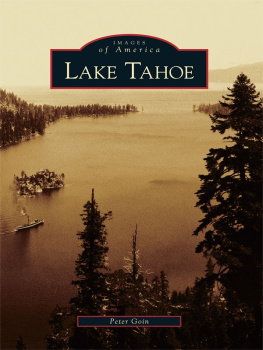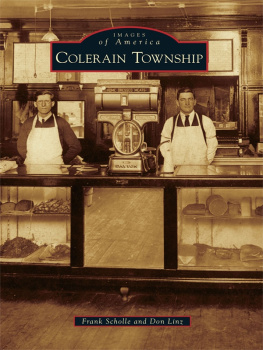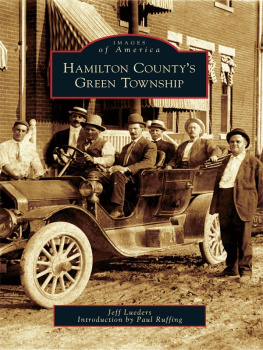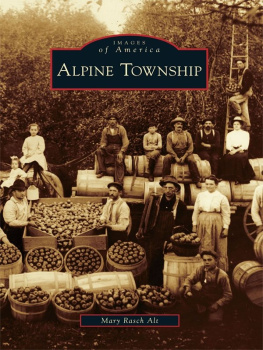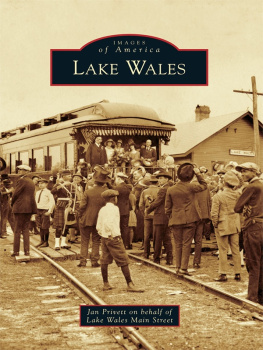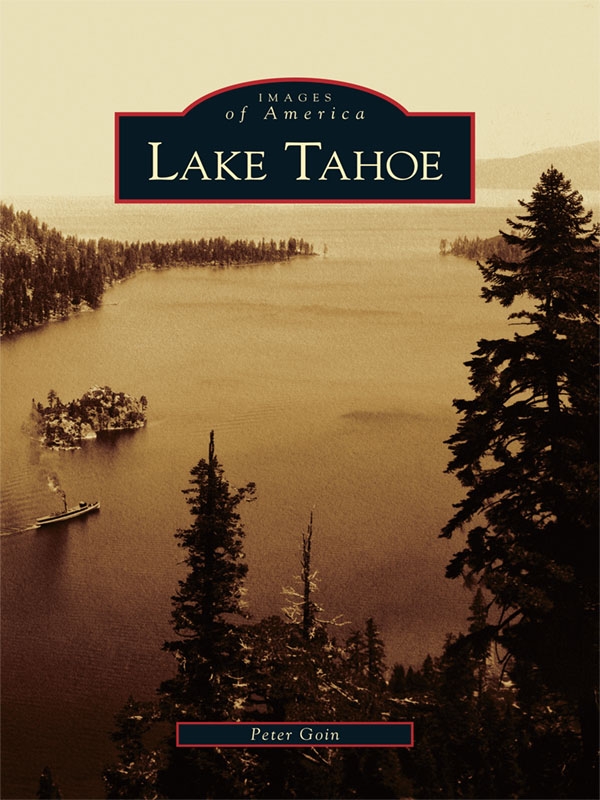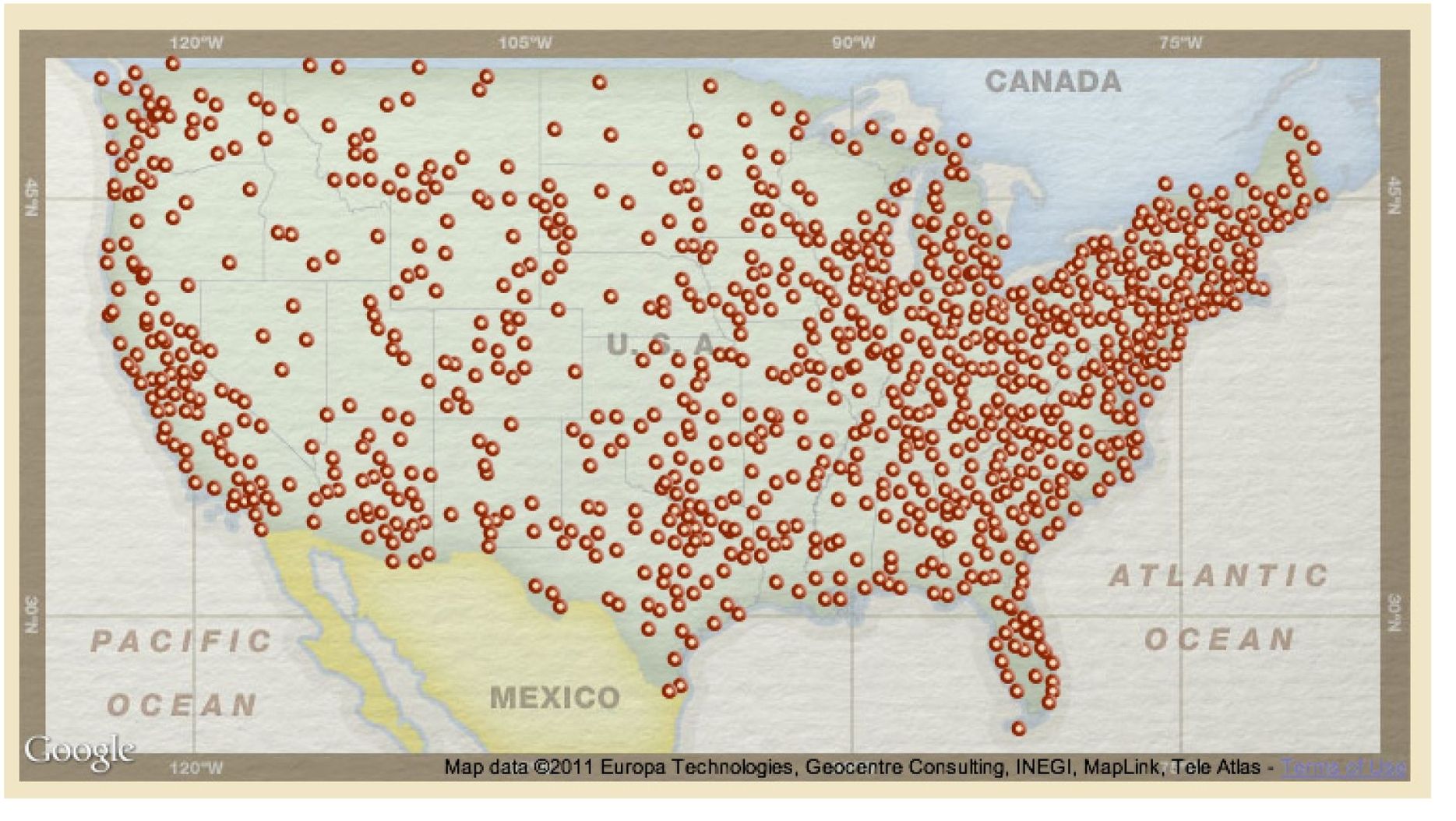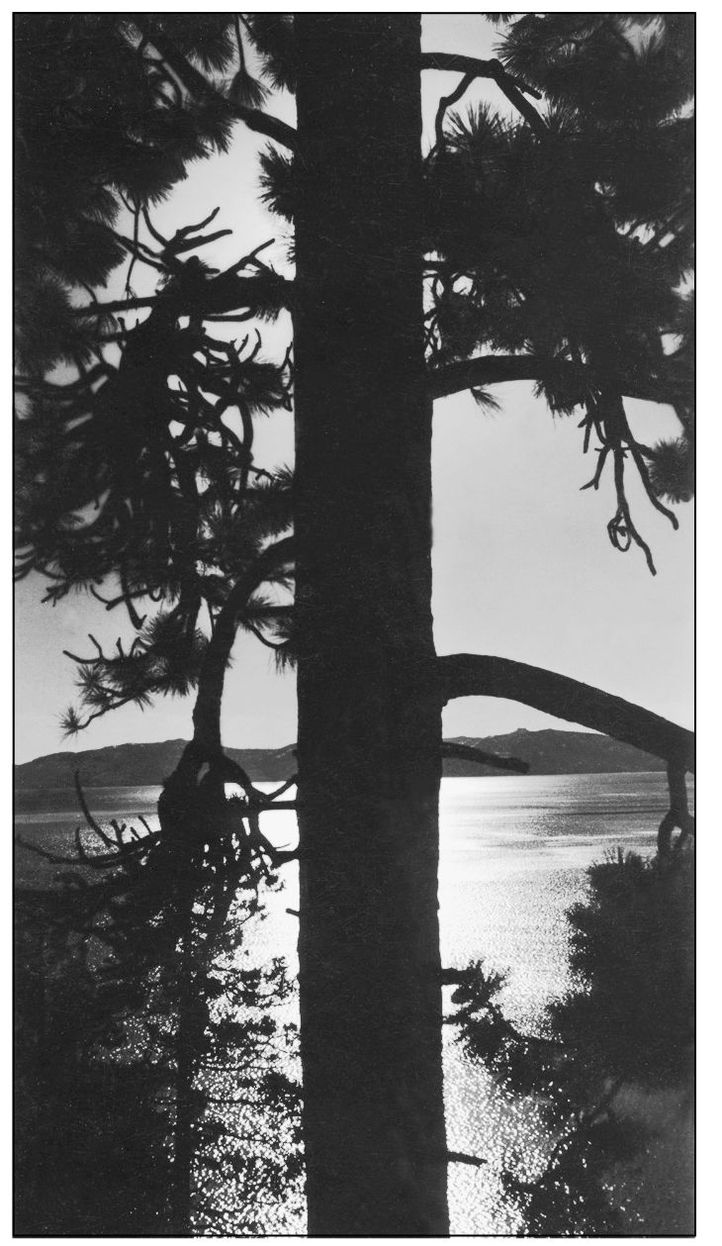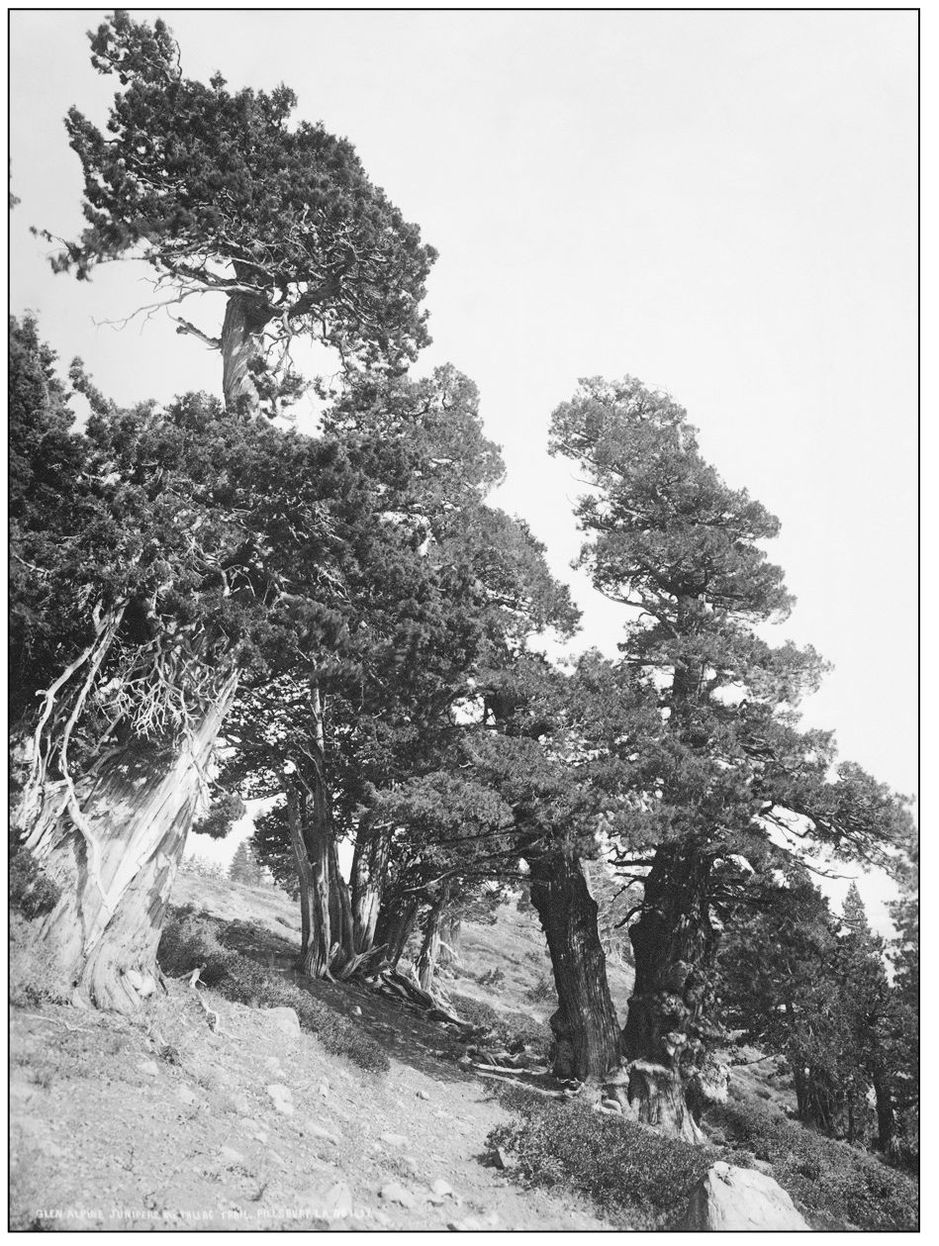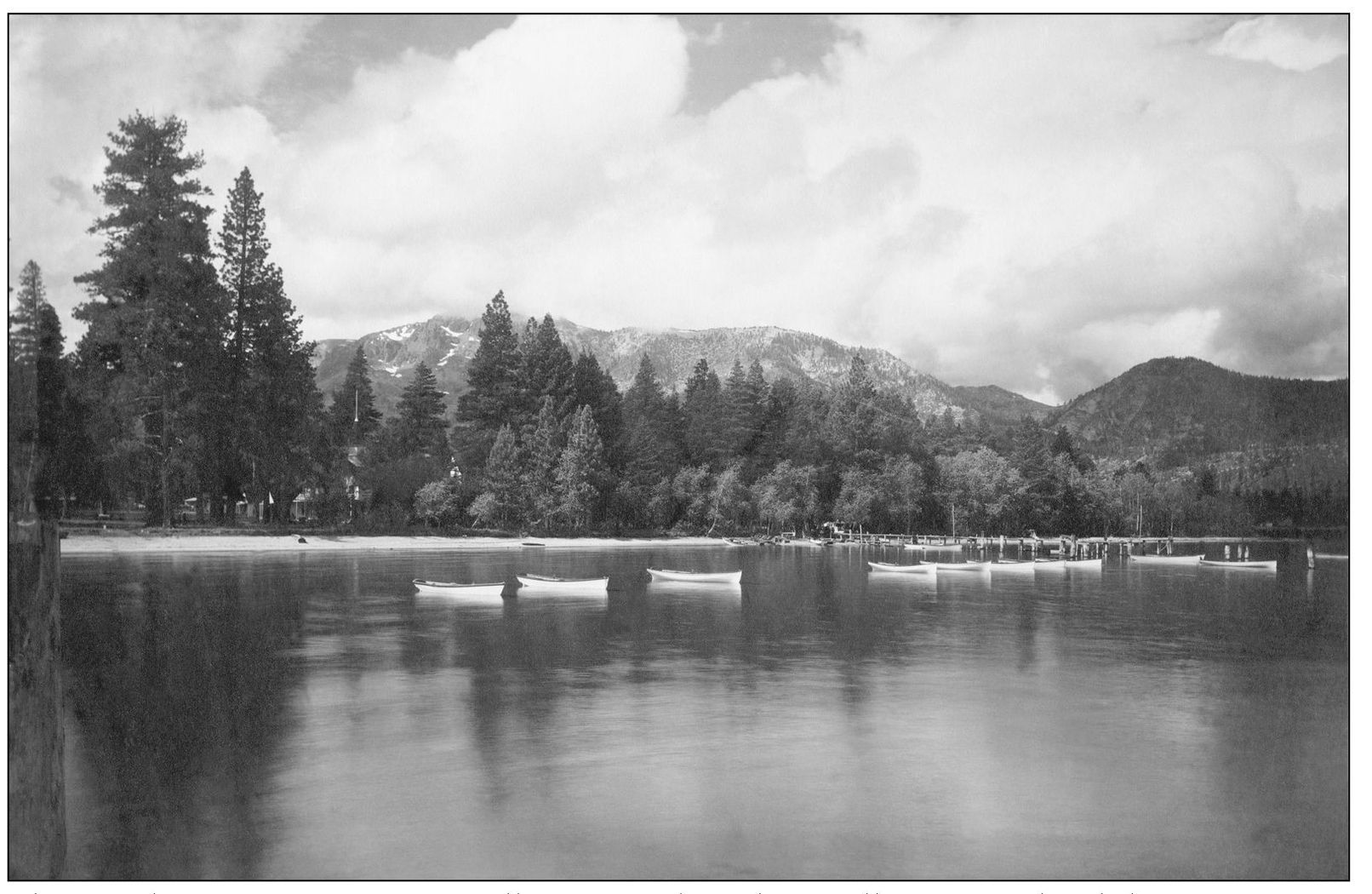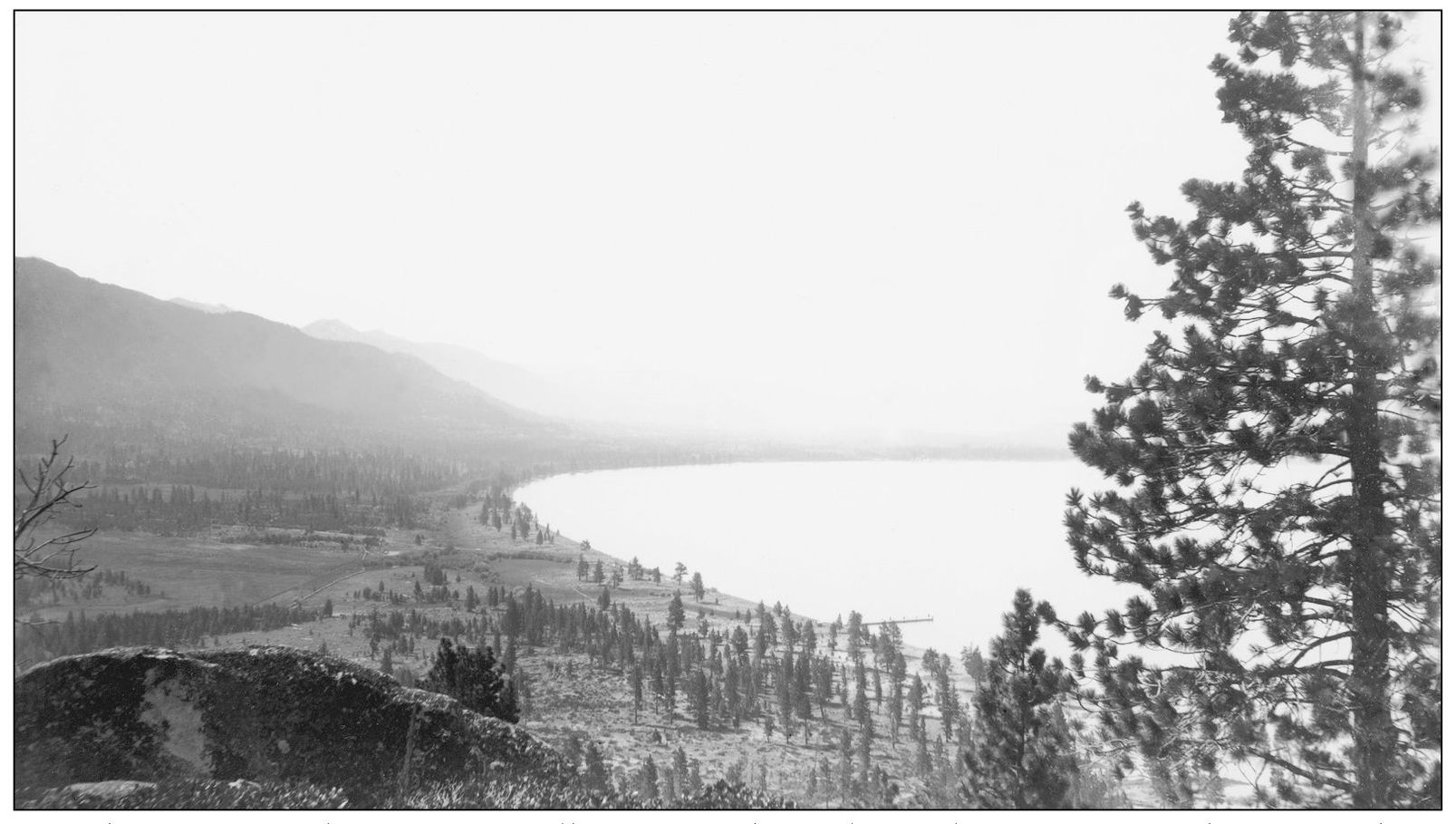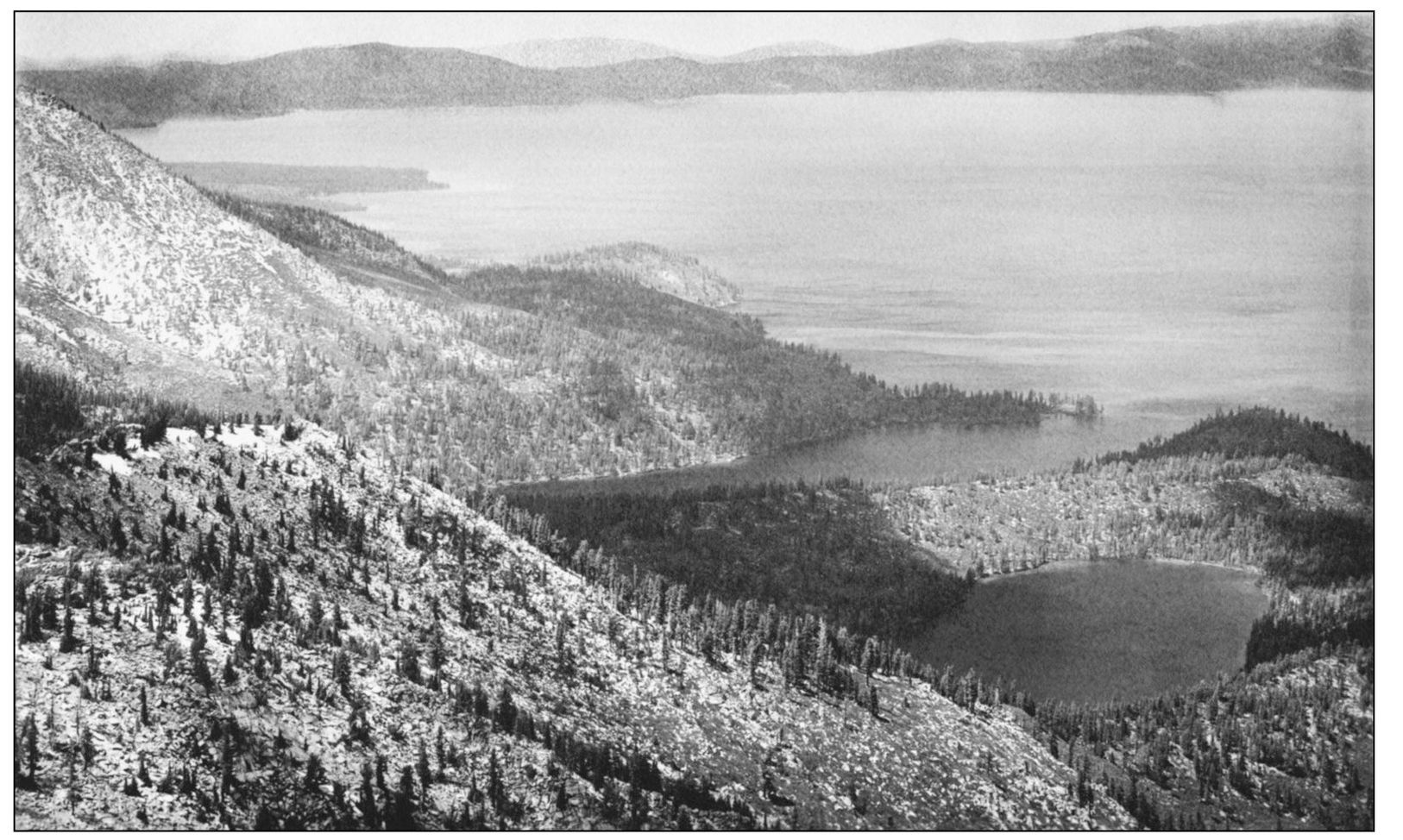One
SCENICS
Lake Tahoe, approximately 6,223 feet above sea level, encompasses 193 square miles, measures 21.6 miles long, and at places reaches slightly more than 12 miles wide. Accenting its natural clarity, Lake Tahoe is bordered by Mount Tallac (9,700 feet) to the west; Freel Peak (10,881 feet) to the south; Genoa Peak (9,150 feet) to the east, and Mount Rose (10,778 feet) in the north. Lake Tahoes depth (1,645 feet) is exceeded by only nine lakes in the world. (Courtesy of the North Lake Tahoe Historical Society.)
This high-contrast, scenic image was not intended, in any traditional sense, to document the tree or the lake. The composition is an attempt to celebrate the romance of the view. The photographer wanted to portray the intrinsic beauty of a setting sun in an alpine lake environment. Note how the mountains along the horizon become part of the tree, merging the distant landscape with the foreground. (Courtesy of the Nevada Historical Society.)
This photograph of a leaning cedar tree employs a dynamic compositional devicethat of the diagonal line. Using this active angle, earth, water, and sky are divided differently. Traditionally, landscapes are divided along a horizontal axis. The beauty of the lake provokes many visitors to seek the scenic or picturesque sense of place. (Courtesy of the Nevada Historical Society.)
This photograph focuses on the Glen Alpine Junipers along the Mount Tallac Trail. The enjoyment of the landscape is shaped by the choices photographers make. The experience of the place, of the trail, provokes the desire to record for history the unique views of the sojourn. In this way, the photograph becomes an artifact of the experience itself. (Courtesy of the North Lake Tahoe Historical Society.)
A visitor felt compelled to simply record the clarity of the water and mountain air in this photograph titled, Scene at North End of Lake Tahoe. There is no specific subject of the photograph, except for the intrinsic view. This fits a common pattern of vernacular scenic photography. (Courtesy of the Nevada Historical Society.)
Situated between two crests of the Sierra Nevada at 6,250 feet above sea level, Lake Tahoe is one of the purest and deepest freshwater lakes in North America . More than 70 feeder creeks, streams, and rivers empty into this sparkling jewel. This aerial view offers a clue to the immense volume of water: unleashed, Lake Tahoe would flood the entire state of California 14 inches deep. (Courtesy of the Nevada Historical Society.)
This birds eye view is from Mount Tallac, a Tahoe landmark that every conscientious tourist should visit. In 1877, Nevada journalist Henry Mighels composed a poem while camping on its slopes: Oh merciless Tallac,/After many a thump and whack./Im astride your rugged back,/And I am blue and black,/And limp as any sack./And yet Im in the tract/Of a most infernal pack,/Of mosquitoes who attack/My neck about the back . (Courtesy of the South Lake Tahoe Historical Society.)
This is a distant view of Mount Tallac from Lake Tahoe. Tallac is considered the most famous peak in the Tahoe region, in part due to the cross of snow that forms high on the northeastern slope in the spring and summer each year. According to some accounts, Tellec was a native Washoe word meaning great mountain, but the definitive source is undetermined. (Courtesy of the Nevada Historical Society.)
Sapphire Bay, as this was originally captioned, was better known as Boundary Bay, where fishermen in Tahoes early days spread seine nets along the shoreline, catching thousands of native silverside and cutthroat trout from the sandy shallows. But aesthetics, rather than industry, is the subject here. Emerald Bay State Park is at the far distance. Baldwin, Kiva, and Pope beaches make this a popular area. (Courtesy of the South Lake Tahoe Historical Society.)
The scale and size of Lake Tahoe is often difficult to discern unless it is viewed from above, as this example clearly demonstrates. In the foreground of this 1934 image, Cascade Lake and then Emerald Bay are evident. (Courtesy of the North Lake Tahoe Historical Society.)

